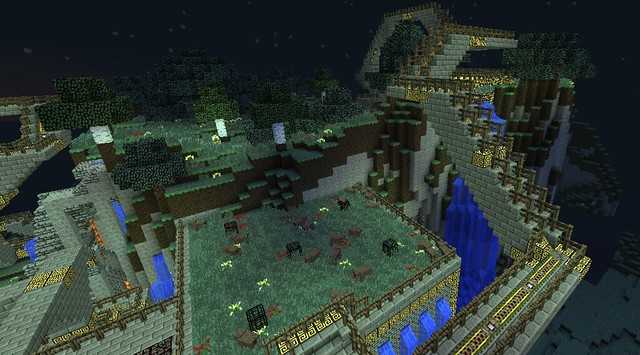Another concept I found important in Chapter 7 was "Higher-order and Lower-order Thinking"(Maloy, et al, 2013, p. 163). These types of thinking comes from Bloom's Taxonomy which starts from the Lower-order to the Higher-order Thinking (Remembering, Understanding, Applying, Analyzing, Evaluating, and Creating). When teaching a math lesson on the Order of Operations (i.e Parenthesis Exponent Multiplication Division Addition Subtraction), the students are to remember the order but then apply it to other problems. With Science, teachers can teach the students about the layers in the Earth and have them remember the order (Lower-order Thinking) and then have them create the Earth and its layers to really get their creativity flowing (Higher-order Thinking). Higher-order Thinking is not necessary in all actions and events. Sometimes Lower-order Thinking is just as effective if not more.
 |
| Photo credited to Marcus Roberson through Wordle.net |
The third concept I found interesting in Chapter 7 is "Virtual Worlds"(Maloy, et al, 2013, p. 173-174). Virtual World games are very popular in which real world activities are brought into a screen. "One well-known virtual world for adults is Second Life, an online subscription game played by millions of people worldwide, in which players adopt an alternative persona( or avatar) through which they live and work in a simulated world". Another well known game played by millions of kids, adolescents, and adults is Minecraft. Minecraft is a game where players can build their own dream world with wildlife, occupations, and play with other people in the same world to expand the works. Minecraft is used in many classrooms today to help kids relax and bring out their inner creativity.
 |
| Photo credit to Game N' Rock on Flikr |
Resources;
Barrett, L. (2015, April 23). What is Minecraft - and why so many people love it (WEB310). Retrieved June 11, 2016, from https://www.youtube.com/watch?v=O2ngnMx-r5U
Luiz, G. (2012, September 23). Minecraft. Retrieved June 11, 2016, from https://www.flickr.com/photos/gamesnrock/8016799388/sizes/z/
Maloy, Robert, Verock-O’Loughlin,Ruth-Ellen, Edwards, Sharon A., and Woolf, Beverly Park (2013). Transforming Learning with New Technologies. 2nd Edition. Boston, MA: Pearson Education, Inc.
Roberson, M. (2016, June 11). Wordle [Digital image]. Retrieved June 11, 2016, from http://www.wordle.net/create
No comments:
Post a Comment